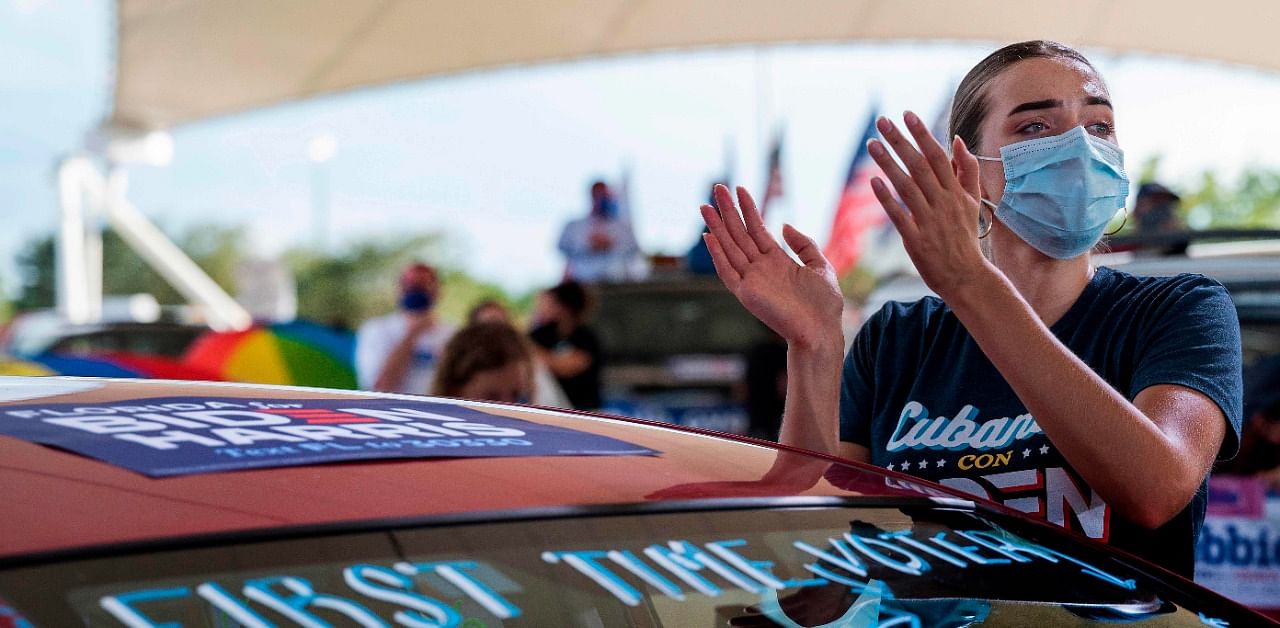
Zeke Dunn of Brooklyn has worked at polling places in nearly every primary and general election since 2017. The 39-year-old television producer says doing so provides a way for him to connect with his neighbours and fulfil his civic duty. But this past June he skipped working in New York State’s primary: his partner is pregnant, and he could not risk bringing the novel coronavirus home from a polling place. As infection rates in New York City declined to low levels over the summer, Dunn decided to work the polls this November. But he worries about getting Covid-19.
“I’m not crazy about the risks,” he says. “If it’s the same as it normally is, it’s exactly what they tell you not to do” to avoid Covid-19: spending 12 to 14-hour shifts in close proximity to other poll workers, as well as interacting with hundreds of voters, in an old and poorly ventilated building.
Dunn says he is determined to show up despite the risks—and this was not a decision he came to lightly. “I thought about how many older people work these jobs,” he says. “If my being willing to work in a high-contact role means they can be put in a job that has less contact with other people because I came to work that day, I’d be happy to make that concession.” He plans on bringing a face shield and several KN95 masks, which block 95 per cent of particles smaller than 0.3 micron, on Election Day.
In June the US Centers for Disease Control and Prevention issued guidelines to help prevent the spread of Covid-19 at polling places. The recommendations advise poll workers and voters to adopt many of the same measures public health experts have encouraged in other settings: wearing masks, maintaining social distancing, and disinfecting surfaces and voting equipment. And people who feel unwell or have recently been exposed to someone with the virus should stay home.
“It’s incumbent upon all election officials at every level to advocate for the recommendations by the CDC for social distancing and mask wearing,” says C. Perry Brown, an epidemiologist at Florida A&M University’s Institute of Public Health. “The only way to cut down on transmission is to adhere to the recommendations.” Brown says he thinks officials should even go so far as to mandate wearing a mask in public. (Some states already have such mandates, but others do not.) Brown recommends that voters look for a voting booth that is next to an empty one and bring disinfecting wipes to quickly clean the booth before touching anything in it.
Voters should also pay attention to whether their polling place is following proper infection control protocols—and speak up if it is not—says Lenora Campbell, dean of the College of Health and Human Sciences at North Carolina Agricultural and Technical State University. She says poll workers should have a plan for how to deal with any voters who might refuse to wear a mask. “It is everyone’s responsibility to ensure a safe voting experience,” Campbell says.
Michael Kohanski, a rhinology fellow at the University of Pennsylvania’s Perelman School of Medicine, recommends that voters go to the polls at times that are less likely to be crowded and take advantage of early voting options if available. “Also, plan a backup time to vote in case you are not comfortable with the wait time at a polling location,” he says. “Take the time to know all the up- and down-ballot candidates and any referendum items that are on your ballot, so you can reduce your indoor time while voting.”
The polling places themselves need to be prepared, too. In July Lidia Morawska, an aerosol scientist who directs the International Laboratory for Air Quality and Health at Queensland University of Technology in Australia, co-authored an open letter in Clinical Infectious Diseases urging public health agencies such as the World Health Organization to recognise the possibility of airborne transmission of coronavirus. That week the WHO updated its guidelines to acknowledge the risk of such transmission. The CDC made a similar update on October 5. Morawska says election officials should maximise airflow at polling places by opening windows or running ventilation systems on high and without recirculation in order to bring in fresh outside air and reduce the risk of airborne spread.
“Local building ventilation engineers should be consulted to identify the best measures,” Morawska says. “If it is not possible to provide adequate ventilation, air purifiers may be installed — and everybody should be wearing masks, particularly the [polling] staff, as they may be potentially exposed in these environments for a long time.”
President Donald Trump — who trails his opponent, former vice president Joe Biden, in national polls—has frequently distorted the facts about mail-in voting and has made unfounded claims about potential ballot fraud. Mail-in ballots are safe and secure, but Trump’s falsehoods may persuade some Americans to vote in person instead. Ben Hovland, chairman of the US Election Assistance Commission, says it is important for voters to know they have options. “[Voters should] think about how they’re going to engage and know what their options are,” he says. “Every state has an option to vote by mail or absentee ballot,” although a handful of states still require an excuse, such as age or disability. People who either want or need to vote in person should go during off hours or take advantage of early voting wherever it is available.
“Election Day is the last day to vote,” Hovland says. “As we spread out the number of Americans participating over a broader election period, rather than just on Election Day, that helps reduce congestion and helps make a safer voting experience for all Americans.”